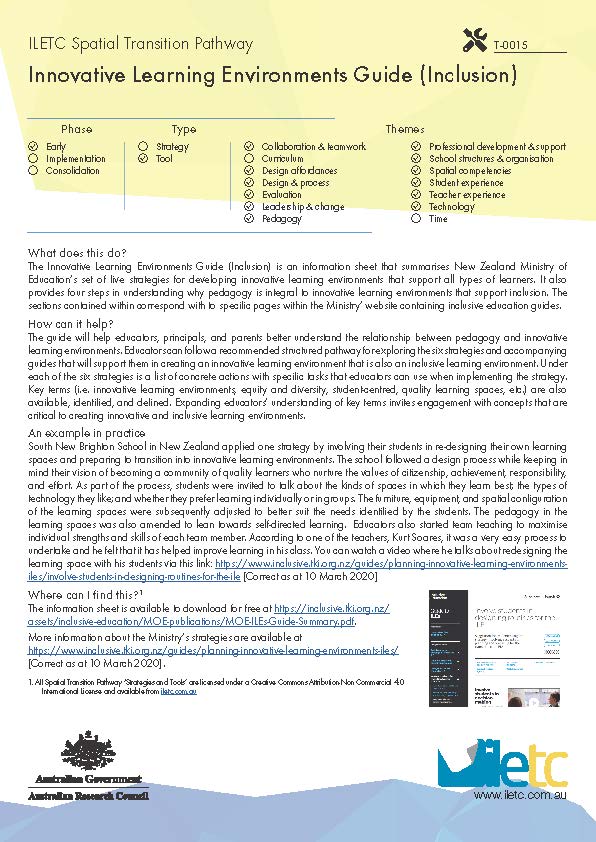| Introduction | Wayfinding activity | Spatial typologies | Spatial transition case studies | Spatial transition resources |
Spatial Transition Pathway
The Spatial Transition Pathway provides a framework for the strategies and tools which support teachers to make the journey of change into innovative learning environments. Strategy is defined as an explicit concept, theory or practice that enhances teachers’ use of innovative learning environments. A tool is an identifiable activity or protocol, that implements a strategy. You can use the database to search for strategies and tools by temporal phase or transition theme(s). If you would like to contribute a strategy or tool, please contact the ILETC team.
Innovative Learning Environments Guide (Inclusion)
The Innovative Learning Environments Guide (Inclusion) is an information sheet that summarises New Zealand Ministry of Education’s set of five strategies for developing innovative learning environments that support all types of learners. It also provides four steps in understanding why pedagogy is integral to innovative learning environments that support inclusion. The sections contained within correspond with to specific pages within the Ministry’ website containing inclusive education guides.

